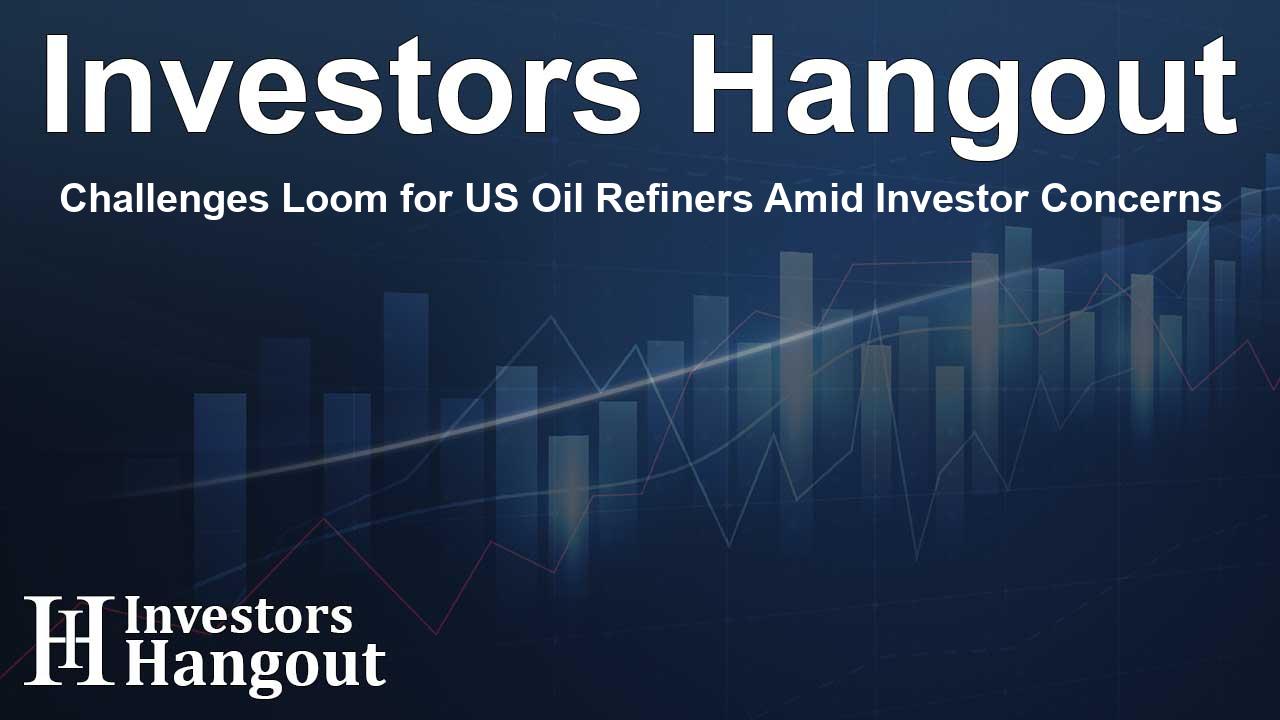Challenges Loom for US Oil Refiners Amid Investor Concerns

Investor Sentiment Shifts in US Oil Refining Sector
There is a growing concern among investors regarding the U.S. oil refining sector, as predictions indicate a decline in fuel demand. Analysts have expressed worries that potential tariffs on crude oil imports could further affect refinery profitability.
Falling Profits and Market Adjustments
Recently, profits for U.S. refiners started to decrease, particularly towards the end of the previous year. This change is primarily attributed to the increase in refining capacity and the normalization of profit margins, following two successful years characterized by high profits fueled by supply shortages and recovery from pandemic impacts.
Furthermore, the shares of major refiners have witnessed a notable decline over past months. Analysts have indicated an average reduction of approximately 24% in expected earnings for refiners in the upcoming quarter, reflecting a cautious outlook on the industry.
Factors Contributing to Margin Erosion
Key observations from analysts point to the diminishing gasoline crack spreads and persistently low diesel crack prices, which significantly impact refining margins. The crack spread, which indicates the difference between the prices of fuel and crude oil, has tightened, indicating challenges for refiners.
This shift has led to a decline in U.S. gasoline futures crack spread, which recently fell below $11, marking a significant drop. Additionally, the ultra-low sulphur diesel crack spread has also declined, further complicating the refining landscape.
Refinery Utilization and Predictions for 2025
U.S. refining utilization rates have remained high, averaging about 90.3% in the fourth quarter, a notable increase from the previous year. Despite this utilization rate, analysts anticipate that earnings estimates will likely decline further in the near future due to a weaker market outlook.
Experts from Jefferies have indicated that the broader economic environment and forward pricing will heavily influence refiners' profitability, potentially leading to further downward adjustments.
Stock Performance Among Major Refiners
Refined stock performances reflect these concerns. Valero’s stock has diminished by more than 6%, while Phillips 66 and Marathon Petroleum have experienced even larger declines, with drops of over 15% and 8% respectively. These downturns in market performance indicate growing skepticism among investors about the sector's prospects.
Global Demand Dynamics and Economic Pressures
The U.S. retains its position as the largest exporter of motor gasoline globally, yet recent signs indicate dwindling demand from key markets like China. Economic slowdowns in both the U.S. and China have compounded concerns about future consumption levels.
Despite an uptick in global oil demand predictions, growth is expected to be most robust in emerging markets in Asia, posing further challenges for U.S. refiners. This situation is aggravated by the rise of electric vehicles, which are changing consumption patterns.
Future Volatility Amid Policy Uncertainties
As the nation awaits clarity on future government policies, particularly with the new Presidential administration, uncertainty looms large. With proposed tariffs on oil imports from neighboring countries, the refining sector could face increased costs, further squeezing margins.
An analyst from Tortoise Capital has remarked that the refining sector may remain in a challenging environment until there is a clearer picture of economic directions and trade policies. This reflects the hesitancy among investors as they navigate an increasingly complex market landscape.
Conclusion: Navigating a Tough Environment
In summary, U.S. oil refiners are facing a turbulent landscape characterized by falling demand, potential tariffs, and a shifting economic backdrop. Stakeholders in the sector must remain vigilant and adaptable as these dynamics continue to evolve.
Frequently Asked Questions
What factors are affecting investor sentiment in the U.S. oil refining sector?
Investor sentiment is being affected by forecasts of declining fuel demand and concerns about potential tariffs on crude oil imports.
How have refining profits changed in recent months?
Refining profits have seen a decline due to increased capacity and normalized profit margins following periods of robust earnings.
What is the significance of crack spreads for refiners?
Crack spreads indicate the difference between fuel and crude oil prices; lower crack spreads suggest tighter margins for refiners, impacting profitability.
What challenges does the U.S. oil refining sector face going forward?
Future challenges include potential tariffs, declining global gasoline demand, and economic uncertainties both domestically and internationally.
Which companies have seen notable stock performance declines recently?
Valero, Phillips 66, and Marathon Petroleum have all experienced significant stock declines amid growing market skepticism.
About The Author
Contact Lucas Young privately here. Or send an email with ATTN: Lucas Young as the subject to contact@investorshangout.com.
About Investors Hangout
Investors Hangout is a leading online stock forum for financial discussion and learning, offering a wide range of free tools and resources. It draws in traders of all levels, who exchange market knowledge, investigate trading tactics, and keep an eye on industry developments in real time. Featuring financial articles, stock message boards, quotes, charts, company profiles, and live news updates. Through cooperative learning and a wealth of informational resources, it helps users from novices creating their first portfolios to experts honing their techniques. Join Investors Hangout today: https://investorshangout.com/
The content of this article is based on factual, publicly available information and does not represent legal, financial, or investment advice. Investors Hangout does not offer financial advice, and the author is not a licensed financial advisor. Consult a qualified advisor before making any financial or investment decisions based on this article. This article should not be considered advice to purchase, sell, or hold any securities or other investments. If any of the material provided here is inaccurate, please contact us for corrections.
